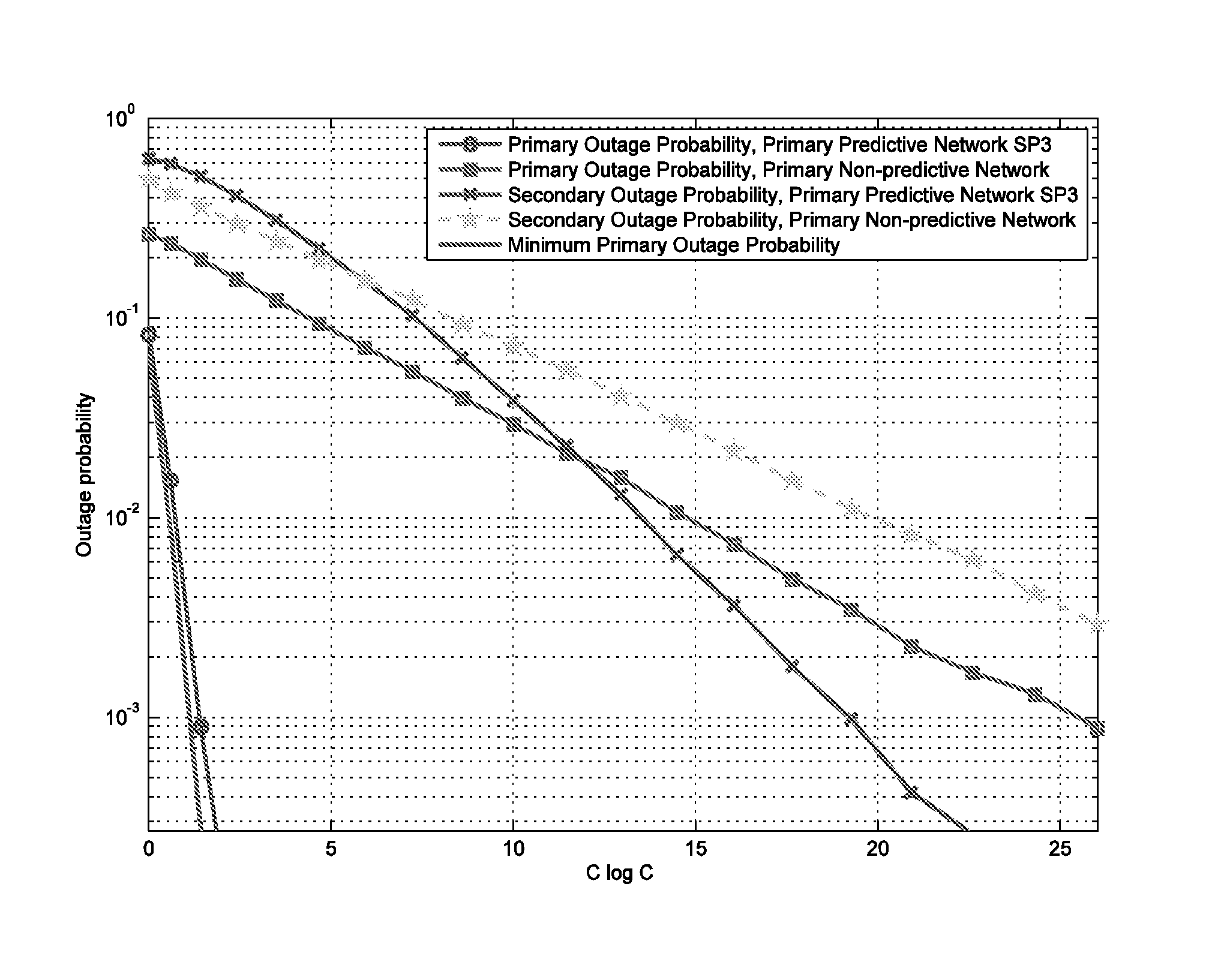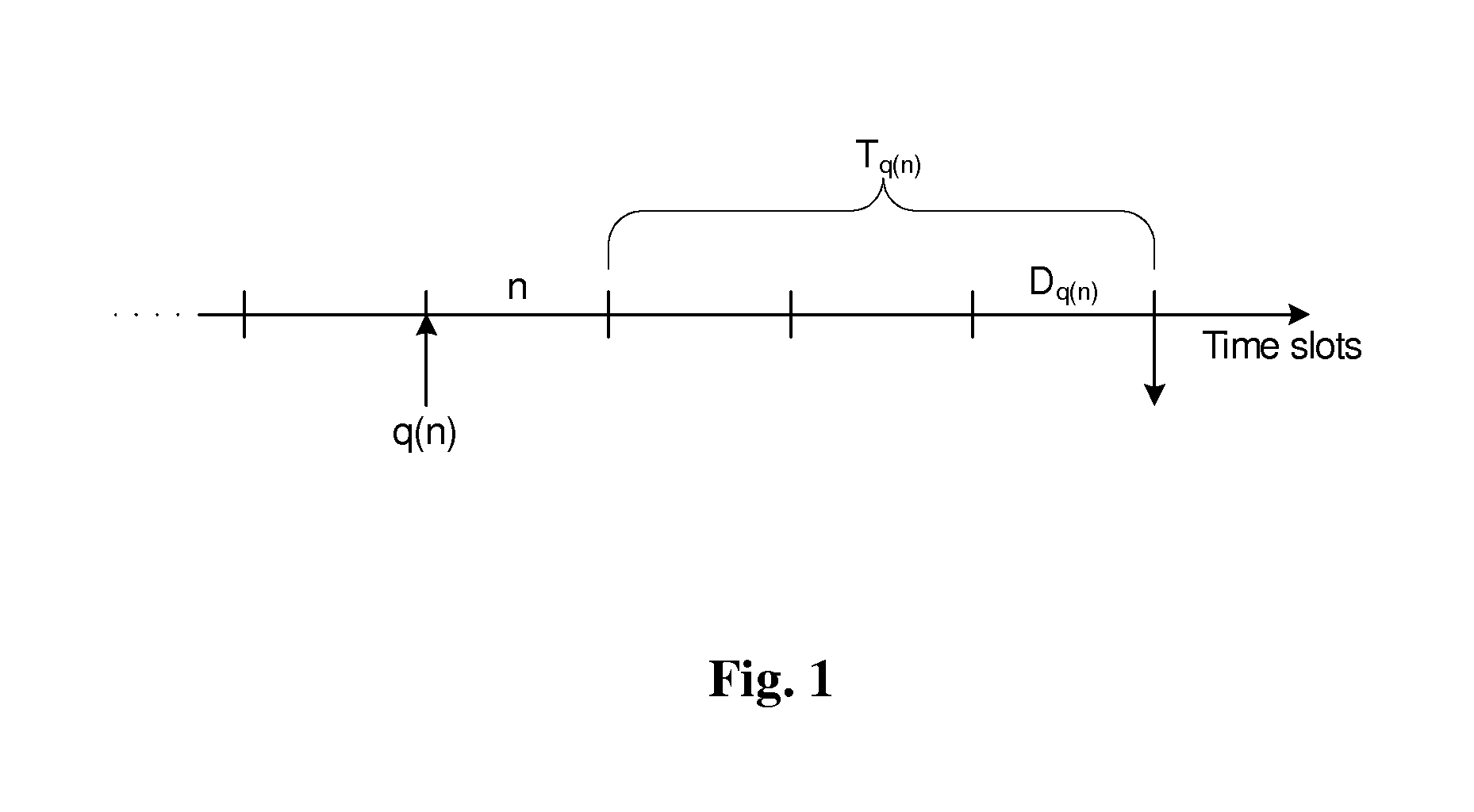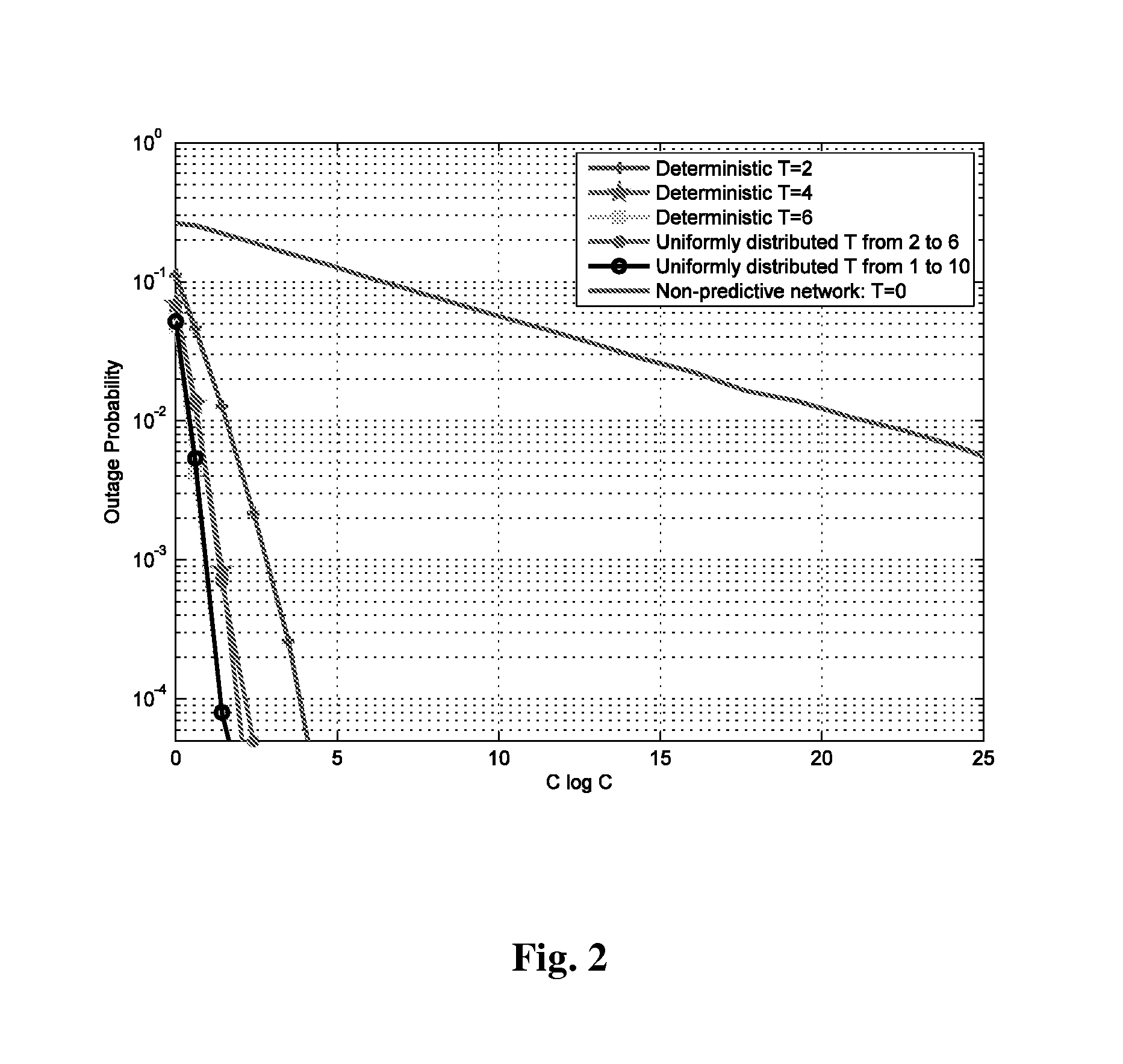System and method for proactive resource allocation
a resource allocation and resource technology, applied in the field of network traffic management, can solve the problems of cognitive radio approach, significant regulatory and technological hurdles, disparity between, etc., and achieve the effect of reducing the bandwidth required and reducing the peak to average demand ratio
- Summary
- Abstract
- Description
- Claims
- Application Information
AI Technical Summary
Benefits of technology
Problems solved by technology
Method used
Image
Examples
Embodiment Construction
[0016]Usage of wireless devices is highly predictable. This claim is supported by a growing body of evidence that range from the recent launch of Google Instant to the interesting findings on predictable mobility patterns [5]. In this context, a relevant example is the fact that preference for a particular news outlet is not expected to change frequently. So, if the smart phone observes that the user is downloading CNN, for example, in the morning for a sequence of days in a row then it can safely anticipate that the user will be interested in the CNN again the following day. Coupled with the fact that the most websites are refreshed at a relatively slow rate, as compared with the dynamics of the underlying wireless network, one can now see the potential for scheduling early downloads of the predictable traffic to reduce the peak to average traffic demand by maximally exploiting the available spectrum in the network idle time.
[0017]It is important to observe here the temporal and sp...
PUM
 Login to View More
Login to View More Abstract
Description
Claims
Application Information
 Login to View More
Login to View More - R&D
- Intellectual Property
- Life Sciences
- Materials
- Tech Scout
- Unparalleled Data Quality
- Higher Quality Content
- 60% Fewer Hallucinations
Browse by: Latest US Patents, China's latest patents, Technical Efficacy Thesaurus, Application Domain, Technology Topic, Popular Technical Reports.
© 2025 PatSnap. All rights reserved.Legal|Privacy policy|Modern Slavery Act Transparency Statement|Sitemap|About US| Contact US: help@patsnap.com



